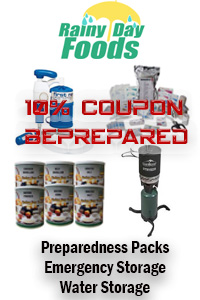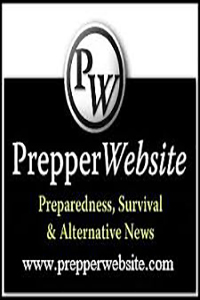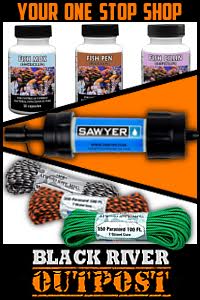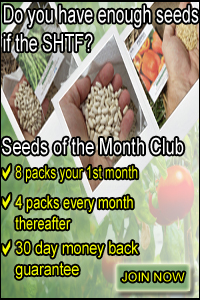By The Maj
In the long term survival situation, our meals are going to transform drastically from what we are accustomed to today. Typical breakfast today is eggs, meat, and bread or a simple milk and cereal, while a traditional lunch or dinner will range from a hearty salad and sandwich combo to steak, potatoes, vegetable, and dessert. Post SHTF, our eating habits will change and as our stockpiles dwindle, we will be faced with the challenge of supplementing our diet in some manner or another. I know the typical answers range from planning to hunt or fish, trapping, and gardening in some manner or another for long term sustainability. Some of the more adept and fortunate preppers will even choose to focus on the livestock aspect of long term survival. All of these are viable solutions to the problem that we will have to face but putting all of your eggs in one basket is never a good idea and some solutions will work for some preppers while not being viable for others.
One area that is often overlooked, undervalued, or absolutely avoided is foraging for edible and/or medicinal plants post SHTF. Foraging is undervalued because it can take a lot of work studying plants pre SHTF and the benefit versus work required post SHTF is less than some of the more popular survival sustainability strategies already mentioned. Living in the world of the big box store has lead many people to believe that foraging is easy or maybe their handy survival manual tells them how to test plants for consumption meaning this skill will be overlooked for post SHTF acquisition. Most people that I talk to absolutely avoid considering foraging for edible plants for long term sustainability because it takes a good bit of work to become proficient at it AND if you make a mistake it can cost you your life in extreme cases or make you very sick in many others. Nature provides this stockpile naturally all over the world and the best thing is it is a readily renewable resource. In a bugout situation, I consider foraging for edible plants to be one of the top five critical skills and a skill that has life saving potential in the right situation(s). The trick is, like with many other skills necessary for long term survival, post SHTF is not the time to try to acquire it.
If you seek to acquire this skill, the first thing that you will need to do is acquire the necessary reference(s). Now, I know many reading this already have a survival manual of some type in their library and I also know that most survival manuals cover edible plants in some form or another. However, these manuals tend to take the “shotgun” approach to survival and numerous, very important things tend to be missed in these one size fits all survival manuals when it comes to edible plants and medicinal herbs. As with all things survival, there are hundreds of field guides, reference sheets, and books concerning edible plants, medicinal herbs, and edible mushrooms to be had on the market. While I have many in my library, I tend to lean on one of the Peterson series of field guides like: “The Peterson’s Field Guide to Edible Wild Plants of Eastern and Central North America”. The reason I lean to Peterson’s is they have been in the business of “outdoors” identification for a very long time, they have regionalized most of their work, their field guides include pictures and natural habitat, and most people find them easier to use. With that said, there are numerous other field guides that are outstanding references for this topic like: “Nature’s Garden”, “The Forager’s Harvest”, and “Field Guide to Medicinal Wild Plants”, etc. When determining which reference is right for you, make certain that it covers the area(s) you plan to survive in, you can understand how to use the field guide to identify the proper plants, and if possible it includes pictures. When searching for a reference like this, I always recommend that you make a trip to the bookstore and put your hands on the reference before purchasing it instead of purchasing a useless reference from the internet.
Once you have your reference in hand, take the time to sit down and study it. You will find that most references cover a very broad area and there will be many species of edible plant that do not grow where you live. Study the pictures and the natural habitat where the plants can be found closely and get comfortable with flipping from section to section in the book. If you have spent any time outdoors, there will be several species which you will be able to identify easily and if your reference has a “look alike” section make certain that you pay particular attention to them. When you are comfortable with your chosen reference(s) it is time to practice.
Practicing this skill can be incorporated into any trip in the great outdoors. Whether you are on a day hike, a day at the lake, camping trip, or spending time in your back yard, you should consider taking your field guide with you and spend a little time identifying the edible plants around you. I have found that younger kids find it “really cool” when you can pull out a reference with pictures and teach them how to identify a plant of any type, so it is normally pretty easy to get kids interested in doing this as well. As you practice identification, make notes in the margins of the reference guide and focus on memorizing the benefits of some of the more common plants. Any amount of knowledge you can commit to your memory may very well save your life later.
When you become more proficient in identification and are sure of yourself, feel free to start “testing” some of the plants that you find. Now, as I said earlier, this can be dangerous, so I would recommend utilizing one of the tests you will find in most survival manuals for edible plants in order to be certain that you are not allergic to the plant or have not made a mistake in identification. Once you have completed your personal consumption test and get more comfortable, start incorporating some of the wild edibles into your diet on overnight trips. Doing so will serve two purposes which are getting you accustomed to the taste and determining what kind of affect the wild edible may have on your body (bloating, gas, etc.). Eventually, you might even want to consider working your way up to a full scale, post SHTF camping trip where you rely on nothing but what you can forage for or catch.
Well before the dawn of agriculture, man was a hunter gatherer (forager) and he survived in that manner for years and years. For some reason, we have forgotten the “gatherer” portion of that equation and foraging for edible plants has become a lost art to many. Now is the time to rediscover what nature can provide naturally and doing so will put you miles ahead in your preparations.









2 comments
Hi Maj! I think you bring up a lot of great points in your article here! Right now, I am focusing on the skills section of my prepping. I have started learning how to make items that we take for granted, like bread and pasta. From there, I will be learn how to grind my own flour, make my own yeast, extract my own sugar and salt, etc. Then I will be dabbling in actually growing the things in a garden! Little baby steps, but I’ll get there. This has two really important purposes for me: A) when SHTF, i’ll know how to grow and farm (many people don’t, including myself — for now) B) It’s a way healthier way of life, that I want to start living!! I am finding that preppers are great source of knowledge re: organic and sustainable growing! Great website!
I would also recommend a series of books by Tom Brown. He has some good books relating to foraging and plant identification, as well as a numberof other survival skills. He is my personal favorite author on this topic.